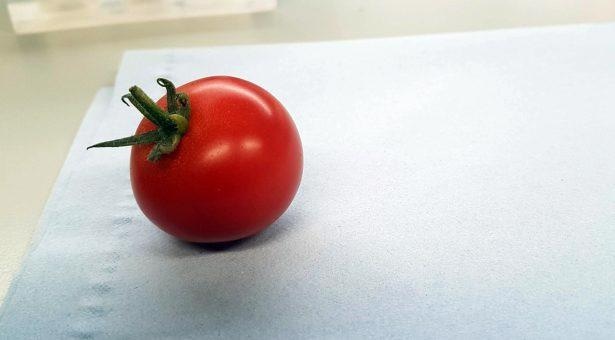Researchers employed gene editing to switch off a specific component in the tomato plant’s DNA, which led to an increase in provitamin D3 in both the fruit and leaves. After that, UVB light was used to convert it to vitamin D3.
 Tomatoes gene-edited to produce vitamin D, the sunshine vitamin, could be a simple and sustainable innovation to address a global health problem. Image Credit: John Innes Centre
Tomatoes gene-edited to produce vitamin D, the sunshine vitamin, could be a simple and sustainable innovation to address a global health problem. Image Credit: John Innes Centre
Vitamin D is produced in our bodies when our skin is exposed to UVB sun, although food is the primary source. This new biofortified crop could benefit millions of people suffering from vitamin D deficiency, a rising problem linked to an increased risk of cancer, dementia, and a variety of other diseases. Vitamin D deficiency has also been connected to the higher severity of Covid-19 infection in research.
Tomato leaves generally contain very modest levels of provitamin D3 or 7-dehydrocholesterol (7-DHC), one of the vitamin D3 building blocks. In normal circumstances, provitamin D3 does not develop in mature tomato fruits.
Professor Cathie Martin’s team at the John Innes Centre employed CRISPR-Cas9 gene editing to make changes to tomato plants’ genetic code such that provitamin D3 builds in the fruit. The modified plants’ leaves contained up to 600 ug of provitamin D3 per gram of dry weight in their leaves. For adults, a daily dose of 10 ug of vitamin D is suggested.
When producing tomatoes, the leaves are normally discarded, but those from the altered plants could be used to make vegan-friendly vitamin D3 supplements or to fortify food.
We’ve shown that you can biofortify tomatoes with provitamin D3 using gene editing, which means tomatoes could be developed as a plant-based, sustainable source of vitamin D3.”
Cathie Martin, Study Corresponding Author and Professor, John Innes Centre
The study appears in the journal Nature Plants.
“Forty percent of Europeans have vitamin D insufficiency and so do one billion people worldwide. We are not only addressing a huge health problem but are helping producers, because tomato leaves which currently go to waste, could be used to make supplements from the gene-edited lines,” Martin added.
Earlier studies looked at the molecular mechanism of how 7-DHC is used in the fruit to make compounds and discovered that it is converted into other molecules by an enzyme called Sl7-DR2.
The scientists gained control of this by using CRISPR-Cas 9 to turn off the Sl7-DR2 enzyme in tomatoes, allowing 7DHC to develop in the fruit.
They tested the amount of 7-DHC in the leaves and fruits of these modified tomato plants and discovered that both the leaves and fruits of the edited plants had significantly higher levels of 7-DHC.
Both the interior and the skin of the tomatoes acquire 7-DHC.
The scientists next used UVB light on leaves and sliced fruit for an hour to see if the 7-DHC in the altered plants could be transformed into vitamin D3. They discovered that it did and that it was successful.
After being exposed to UVB light to convert the 7-DHC to Vitamin D3, one tomato contained the same amount of vitamin D as two medium eggs or 28g tuna—all of which are suggested vitamin D sources.
According to the study, prolonged UVB exposure, such as during sun-drying, can boost vitamin D levels in ripe fruit.
The tomato plants’ development, maturity, or yield was unaffected by blocking the enzyme. Since aubergine, potato, and pepper are strongly linked plants with the same metabolic route, the strategy might be applied to all of these vegetable crops.
The UK government said earlier this month that it would conduct an authorized examination to assess if food and drink should be supplemented with vitamin D to tackle health disparities.
Vitamin D is scarce in most foods, and plants are often poor sources. When the skin is exposed to sunshine, vitamin D3 is created, which is the most accessible form of vitamin D. Since the sun is not powerful enough for the body to create vitamin D properly in the winter and at higher latitudes, people must acquire it through their diet or supplements.
The Covid-19 pandemic has helped to highlight the issue of vitamin D insufficiency and its impact on our immune function and general health. The provitamin D enriched tomatoes we have produced offer a much-needed plant-based source of sunshine vitamin. That is great news for people adopting a plant-rich, vegetarian or vegan diet, and for the growing number of people worldwide suffering from the problem of vitamin D insufficiency.”
Dr Jie Li, Study First Author, John Innes Centre
Source:
Journal reference:
Li, J., et al. (2022) Biofortified tomatoes provide a new route to vitamin D sufficiency. Nature Plants. doi.org/10.1038/s41477-022-01154-6.